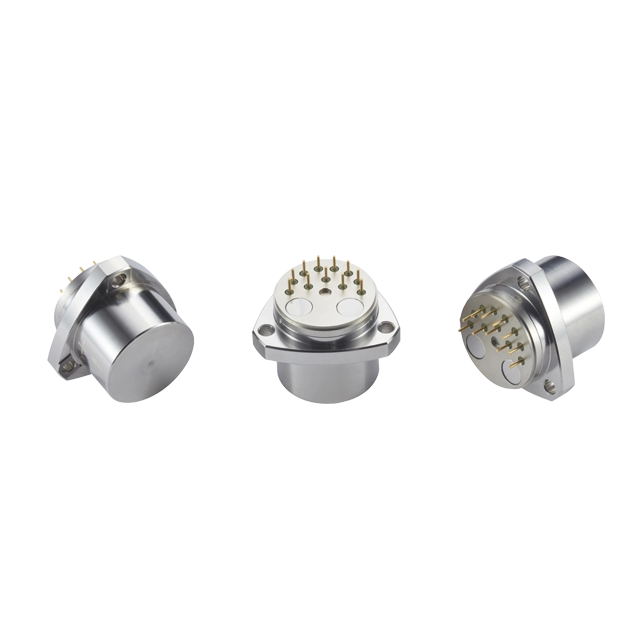Views: 0 Author: Site Editor Publish Time: 2024-11-06 Origin: Site












Oil drilling is a complex and arduous project, and quartz accelerometers play a crucial role in this process. In the process of oil drilling, the inclinometer probe is one of the key equipments, and the quartz accelerometer is an important part of the inclinometer probe.
The quartz accelerometer can accurately measure the acceleration during the drilling process and provide an important basis for determining the drilling direction. In the drilling process, due to the complex underground geological conditions, the accuracy of the drilling direction is extremely important. If there is a deviation in the drilling direction, it will not only affect the efficiency of oil extraction, but also may lead to the occurrence of drilling accidents. The quartz accelerometer can monitor the acceleration changes in the drilling process in real time. Through the analysis of acceleration data, the drilling direction can be accurately determined and the accuracy and safety of drilling can be improved. Therefore, choosing a correct quartz accelerometer is crucial to the entire drilling system.
How to choose a suitable quartz accelerometer needs to be considered from the following aspects:
1.Performance parameters:
Measurement range: Select an appropriate measurement range according to the specific needs of oil drilling. For example, in conventional drilling operations, an accelerometer may need to be able to measure accelerations from a few g to several tens of g, because there will be vibrations, impacts, and acceleration changes generated when the drill bit advances in the rock during the drilling process. If it is a special drilling process or operating under complex geological conditions, a wider measurement range may be required.
Accuracy: A high-precision accelerometer is very important for accurately monitoring various dynamic changes in the drilling process. Accuracy usually includes indicators such as resolution, linearity, and zero-bias stability. The resolution should be high enough to be able to distinguish tiny acceleration changes; good linearity can ensure an accurate correspondence between the measurement result and the actual acceleration; high zero-bias stability can ensure that when there is no acceleration input, the output of the accelerometer is close to zero.
Frequency response: In oil drilling, there are both low-frequency vibrations (such as the rotation of the drill bit and the shaking of the drill pipe) and high-frequency impacts (such as the instantaneous impact when the drill bit encounters hard rock). Therefore, quartz accelerometers need to have a wide frequency response range and be able to accurately measure acceleration signals of different frequencies.
2.Environmental adaptability:
Temperature adaptability: The downhole temperature environment is complex and relatively high. Usually, an accelerometer is required to work stably in a high-temperature environment. Generally speaking, a quartz accelerometer that can work normally at a temperature of at least 120°C or above (common high-temperature working environment requirements) should be selected, and the change of its performance parameters at high temperatures should be within an acceptable range.
Vibration and shock resistance: Strong vibrations and shocks will be generated during the drilling process. The accelerometer must have good vibration and shock resistance, be able to withstand high-intensity vibrations and shocks without damage, and still maintain accurate measurement results in such a harsh environment. For example, some high-quality quartz accelerometers can withstand impacts of several hundred g or even higher.
Sealing performance: There may be moisture, corrosive substances, etc. downhole. Therefore, the accelerometer needs to have good sealing performance to prevent these substances from entering the interior and avoid corrosion and damage to the sensor.
3.Electrical characteristics:
Electromagnetic compatibility: There are various electrical equipment and electromagnetic signals on the drilling site. Quartz accelerometers need to have good anti-electromagnetic interference ability, be able to accurately measure acceleration signals in a complex electromagnetic environment, and the electromagnetic signals generated by themselves cannot affect the normal operation of other downhole equipment.
Power consumption: For some drilling equipment powered by batteries or with strict limitations on power consumption, a low-power quartz accelerometer needs to be selected to ensure the long-term operation of the equipment.
4. Reliability and stability:
Reliability: Oil drilling is an industry with high risks and high investments. The reliability of equipment is extremely important. Select a quartz accelerometer with high reliability. After strict quality inspection and verification, it can work stably for a long time in harsh downhole environments and reduce drilling operation interruptions or safety accidents caused by sensor failures.
Stability: The performance of the accelerometer should remain stable during long-term use and there should be no obvious drift or performance degradation due to the passage of time or changes in the environment.
5.Size and installation method:
Size: Due to the limited space downhole, especially in some narrow wellbores or downhole equipment, it is necessary to choose a quartz accelerometer with a small size so that it can be easily installed and used.
Installation method: The installation method of the accelerometer should be simple and reliable, and it can be firmly installed on the drilling equipment without loosening or displacement during the drilling process. At the same time, consider the impact of the installation method on the measurement accuracy of the accelerometer, and try to choose an installation method that has little impact on the measurement results.